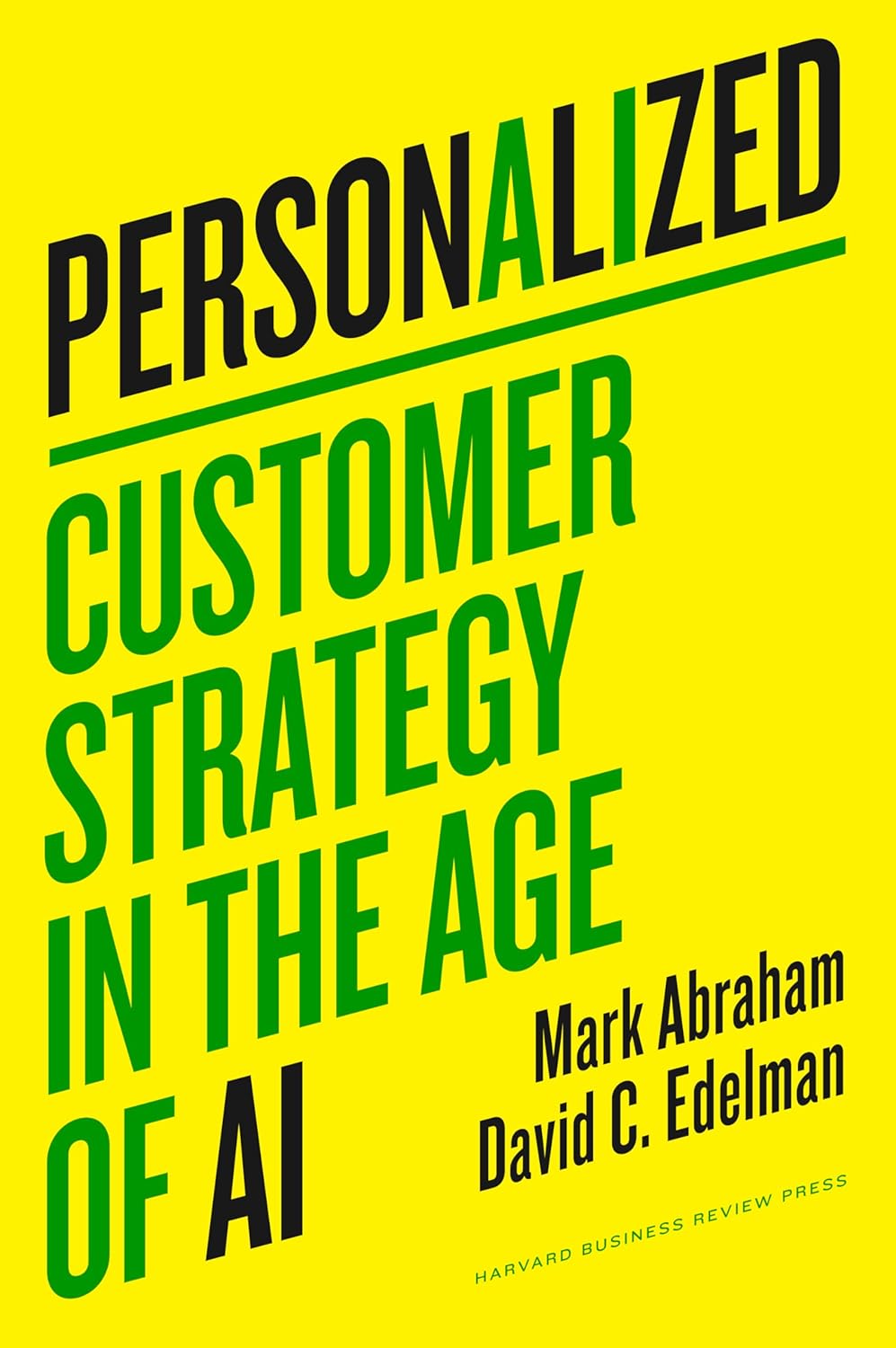Edelman, who has worked with major organizations like McKinsey, Digitas, and Aetna, sheds light on the evolving nature of personalization, the promises brands make to consumers, and the transformative power of AI in driving these experiences. In this exclusive interview, David discusses his journey, the key messages of his book, and why now is the right time for companies to fully embrace personalization.
Why Personalization? Why Now?
David’s journey into personalization began in the late 1980s when companies were just starting to collect customer data. As a young consultant at Boston Consulting Group (BCG), he saw early signs of how this data could be harnessed to deliver personalized experiences. “In 1989, I had three clients in a row asking what they could do with the customer information they were starting to collect,” David recalls. “That led to the term ‘segment of one marketing,’ which I coined after publishing an article on the subject. It was the early days of personalization, and I could see it was going to become a bigger thing.”
Over the years, Edelman has watched personalization evolve from being a marketing buzzword to becoming an integral part of how businesses operate. What makes now the right time for Personalized? “With AI’s capabilities available today, personalization can be done at scale like never before. AI has aligned with data capture, content management, and other technologies, and companies are starting to use personalization strategies as competitive weapons,” David explains. “This felt like the right time to take everything I’ve learned and codify it into a book.”
The Five Promises of Personalization
At the core of Edelman’s book are the five promises of personalization—commitments that companies implicitly make to their customers when delivering a personalized experience. These promises go beyond simply using a customer’s name in an email or showing them ads for products they’ve recently browsed online. “You’re making promises as a brand,” David says. “And we break these down into five key areas.”
1. Empower Me
The first promise, and perhaps the most important, is to empower customers. Personalization should enable them to accomplish something they couldn’t have done otherwise. “It’s not just about tailoring an offer—it’s about unlocking capabilities for the customer that their data allows,” Edelman explains. He shares an example from the solar energy sector: “A company sent me a personalized URL that showed a Google Earth image of my house with solar panels superimposed on the roof, estimating my energy savings. They pulled data from Zillow for my house’s square footage and used my location to estimate solar output. This helped me make an informed decision with ease.”
For Edelman, empowerment is about simplifying complex decisions for customers by leveraging their data in meaningful ways. In this case, what could have been a complicated decision—whether to install solar panels—was made significantly easier through personalized, data-driven insights.
2. Know Me
The second promise revolves around a deep understanding of the customer. “Know me—have data about me that I’ve given you permission to use—and use that data to deliver a more relevant experience,” Edelman stresses. AI plays a pivotal role here, with its ability to create new data from previously unstructured sources like call center interactions. “AI tools can turn voice interactions into structured data—capturing not only what the customer says but also their tone and intent,” he explains.
One example David highlights is how AI helps companies like Pepsi and Nielsen combine disparate data from marketing, sales, customer service, and product usage into a unified view of the customer. “Using AI, companies can write code to combine databases in ways that used to take armies of consultants months to accomplish.”
3. Reach Me
The third promise is about reaching customers at the right time, with the right message. “It’s not just about bombarding customers with ads,” Edelman warns. “It’s about orchestrating interactions in a coordinated way.” He points out that AI can help brands understand the right timing for these interactions. For instance, after moving to a new home, David was overwhelmed by unrelated ads from brands like Home Depot, which didn’t hit the mark. But one company did it right, targeting him with a thoughtful, relevant message about bathroom renovations at precisely the right moment.
“A personalized journey doesn’t end with just knowing your customer—it’s about reaching them when it truly matters,” he adds. AI-powered multivariate testing helps brands refine these touchpoints, ensuring that communication feels timely rather than intrusive.
4. Show Me
This promise focuses on delivering personalized experiences that go beyond surface-level customization. When Edelman served as the Chief Marketing Officer at Aetna, he launched personalized video content to help customers better understand their health plans. “We used AI to create custom videos for each customer, showing them exactly what their health insurance covered, tailored to their individual circumstances. This led to a 20% reduction in calls to our customer service center and increased trust in the brand.”
The key to “show me” is not just personalization for the sake of it but adding real value. Aetna’s personalized videos weren’t just informative—they also reinforced the customer’s confidence in the brand, leading to higher email open rates and greater overall engagement with Aetna’s digital content.
5. Delight Me
Finally, personalization should evolve over time, continuously improving and delighting the customer. “Spotify does this beautifully,” David notes. “The more you listen, the more it learns about your preferences and curates playlists tailored just for you.” The more data a company gathers, the better it can anticipate the customer’s needs and deliver an increasingly refined experience.
Whether it’s a streaming service like Spotify or a retail brand offering product recommendations based on past purchases, the goal is to create a virtuous cycle where customers feel continually understood and catered to.

Personalization in Practice: The Technology Behind the Promises
While the five promises of personalization sound straightforward, delivering on them requires a robust technological infrastructure—what Edelman calls a “personalization engine.” This engine is made up of several components, all working together to deliver seamless personalized experiences.
Data Management
The foundation of any personalization strategy is customer data. “You need a place to store and organize all the customer data—whether that’s a Customer Data Platform (CDP) or another kind of data warehouse,” David says. Without a unified source of truth, companies will struggle to know their customers in a meaningful way. Bringing together data from different touchpoints, whether it’s browsing behavior, purchase history, or customer service interactions, is critical to building accurate customer profiles.
Content Management
Next, companies need a flexible content management system that can deliver tailored content in various formats. “You need modular content that can be mixed and matched based on the customer’s profile,” Edelman explains. AI plays a role here as well, helping companies create personalized experiences at scale, such as dynamic video generation or personalized emails. He cites his work with a large pharmaceutical company, where certain content modules had to go through rigorous compliance reviews while others didn’t—making modularity essential.
Orchestration
At the heart of the personalization engine is the orchestration layer, which determines when and how to engage with the customer. “It’s not enough to just have the data and content—you need to orchestrate when and where to use it,” David says. AI-driven tools like OfferFit enable companies to perform large-scale multivariate testing to optimize their outreach strategies.
Delivery Channels
Finally, companies need systems in place to deliver personalized content across different channels—whether it’s email, SMS, push notifications, or in-app messages. “Each piece of content has to be tagged so that when it’s delivered, you can track its performance and feed that data back into the personalization engine,” Edelman notes. This constant loop of feedback and improvement is what makes modern personalization so powerful.
The Business Case for Personalization
What’s the return on investment (ROI) for personalization? In Personalized, Edelman dedicates a full chapter to the economics of personalization. “We analyzed companies that are leaders in personalization versus those that are laggards, and the difference in growth rates is substantial,” David reveals. “The leaders are growing at a rate 10 points higher than the laggards. These companies are not only seeing higher customer engagement but also lower costs to serve because their interactions are smoother and more efficient.”
One of the key advantages of personalization is its ability to build customer loyalty. “You’re creating a moat around your customers,” Edelman explains. “When they feel understood and valued, they’re less likely to churn.” Additionally, automation and AI lower the cost of delivering personalized experiences, making it a win-win for both the customer and the business.
The Future of Personalization: AI and Ecosystems
As AI continues to evolve, its role in personalization will only grow. But AI isn’t just about tools like ChatGPT, David emphasizes. “AI is going to help companies with multivariate testing, combining disparate data sources, and even writing code to integrate databases,” he says. “It’s not just about generating content—it’s about making personalization scalable.”
David also foresees a future where companies will increasingly compete based on their ecosystems. “Companies like Marriott, Delta, and even financial services firms like Fidelity are positioning themselves as hubs for personalized experiences,” Edelman predicts. By integrating various services and providers into their ecosystems, these companies will be able to offer end-to-end personalized solutions, whether it’s planning a vacation or managing finances.
Conclusion: A Blueprint for the Future
As Edelman looks to the future, he’s optimistic about the potential of personalization to transform how companies engage with their customers. But he also knows that getting personalization right requires more than just technology—it takes a deliberate strategy and a commitment to understanding the customer at a deep level.
For companies looking to implement personalization strategies, Edelman offers this advice: “Start with a simple, common problem that your customers face and use their data to make it easier for them. Personalization doesn’t have to be complex, but it does have to be thoughtful.”
With Personalized, David Edelman provides a blueprint for companies to navigate the future of personalization. Whether through AI, data-driven strategies, or customer-centric experiences, the companies that get personalization right will be the ones that win in the long run.
